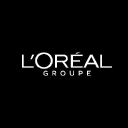How Is L’Oreal’s Skincare Business Expected To Trend?
L’Oreal’s skincare division contributes to around 28% of its revenues and around 30% of our stock price valuation of the company. The cosmetics giant is currently the leader in the skincare market enjoying around 12% of the global market share. We expect L’Oreal’s skincare revenues to rise by about 49% over the next 5 years. Below, we outline some of the reasons for this.
Note: Retailers Average Gross Profit is the gross income earned by the distributor or retailer on account of selling. This income is used for paying expenses on rents, staff, and other logistics and admin costs, leaving the seller with a net income (profit). L’Oreal’s Revenues are calculated after subtracting the retailer’s profit margin from its total market share. We expect the retailer’s gross profit margin to remain at around 42% over the five year period.
- Which Beauty Stock Is A Better Pick – L’Oréal Or Ulta?
- Down 25% This Year Is Estée Lauder A Better Pick Over L’Oréal?
- Is There More Room For Growth In L’Oreal Stock?
- After Underperforming The Markets, Can L’Oreal Stock Rally?
- L’Oreal Stock Poised For Bounce Back After Rough Month?
- After Dismal Performance Last Month, L’Oreal Stock Looks Set To Rebound
Reasons Behind The Expected Growth In L’Oreal’s Skincare Market Size
- With ~$30 billion in annual sales, L’Oreal already enjoys a leading market share compared to other beauty and personal care competitors. L’Oreal’s product portfolio ranges from popular luxury brands like Lancome, Georgio Armani, YSL, Biotherm, and Kiehl’s to popular mass brands like L’Oreal Paris, Maybelline, and Garnier. It also owns popular professional and salon brands like L’Oreal Professional and Matrix, as well as active cosmetics/cosmeceutical brands and the natural and herbal beauty products lineup of The Body Shop.
- Its presence across large distribution channels enables L’Oreal to reach out to more consumers than its competitors. Also, the presence of L’Oreal products across different price points enables the company to maintain its market share.
- The anti-aging market is poised for a healthy compounded annual growth rate of 7.8% between 2013 and 2019 and is projected to be worth $191.7 billion by 2019. We expect L’Oreal to benefit from this growth as the company has a strong anti-aging products lineup.
- It is estimated that at present, foreign-owned and joint enterprises, like L’Oreal and Estee Lauder, have a market share of up to 80% in China, particularly in the premium categories. They are thus likely to be among the major beneficiaries of the expected growth in the beauty segment in China.
- L’Oreal’s big ticket acquisitions such as NYX Cosmetics, Decléor and Carita, and China’s Magic Holding ensures that the company will also grow inorganically in the skincare segment.
- With over 3,800 researchers and a budget representing ~3% of its sales, L’Oréal has the largest Research and Innovation team in the cosmetics industry. L’Oreal spent more than $1 billion in R&D in 2015. The innovative product lineup as a result of this research, as well as the technological advancements in its offerings (such as trying to connect cosmetics via the Internet of Things), ensures the L’Oreal’s skincare segment growth is going to continue for now.
Have more questions on L’Oreal? See the links below.
- What Is L’Oreal’s Fundamental Value On The Basis Of Its Forecasted 2015 Results?
- How Has L’Oreal’s Revenue And EBITDA Composition Changed Over 2012-2016E?
- L’Oreal: Year 2015 In Review
- What Is L’Oreal’s Fundamental Value Based On 2016 Estimated Numbers?
- L’Oreal’s Q1 2016 Earnings Results
- How Did The Top Two Beauty Companies Perform In The Fragrance Segment Over The Last Five Years?
- How Can L’Oreal’s Digital Investments Help The Company?
- Who Relies More On Debt: L’Oreal Or Estee Lauder?
- What Are Some Of The Trends Expected To Drive The Future Of The Beauty Market?
Notes:

